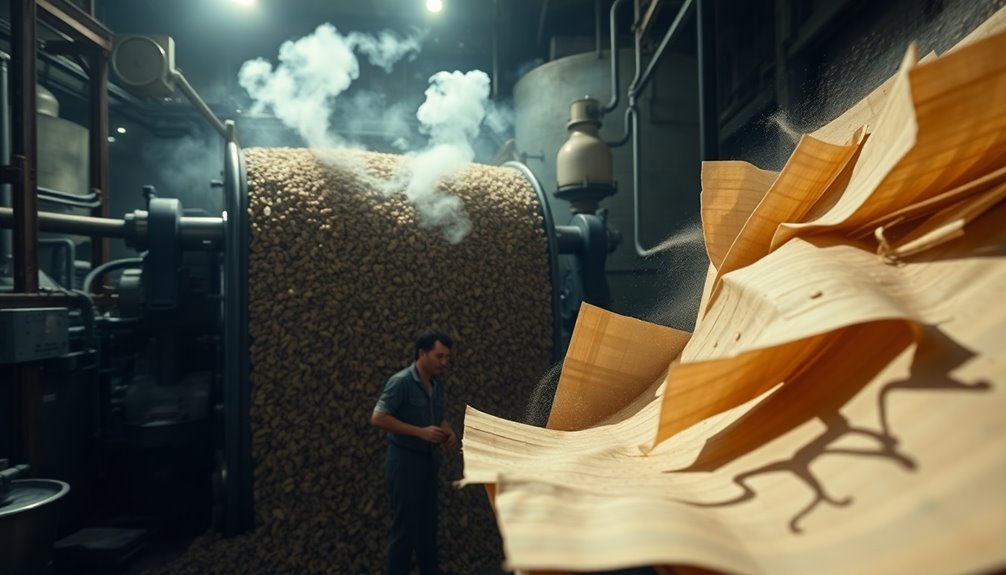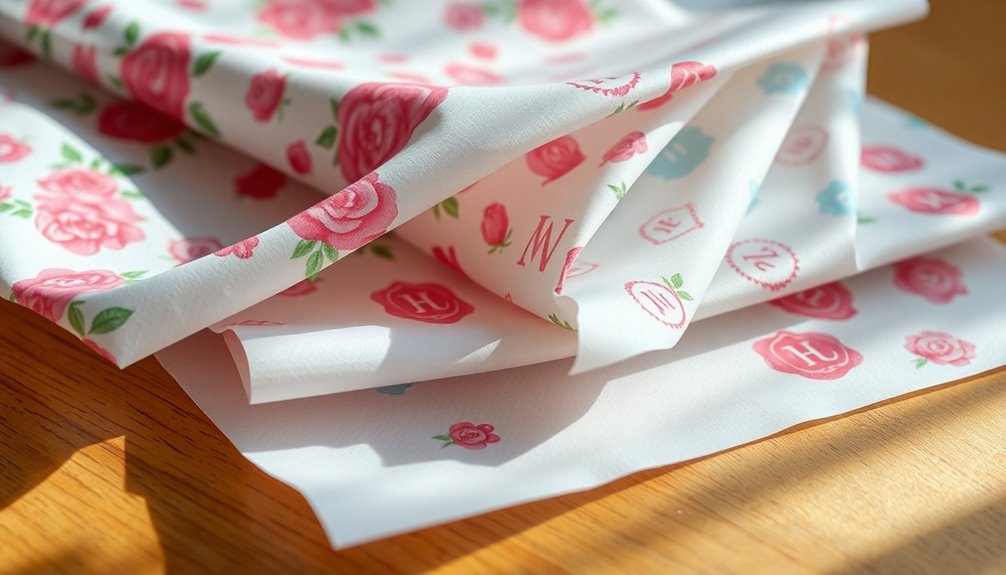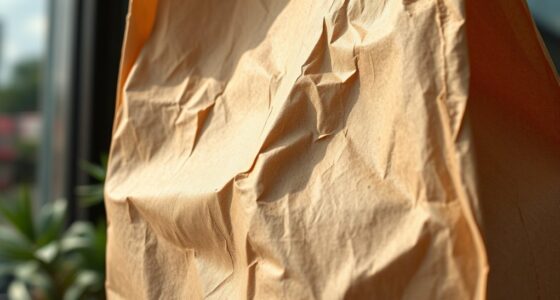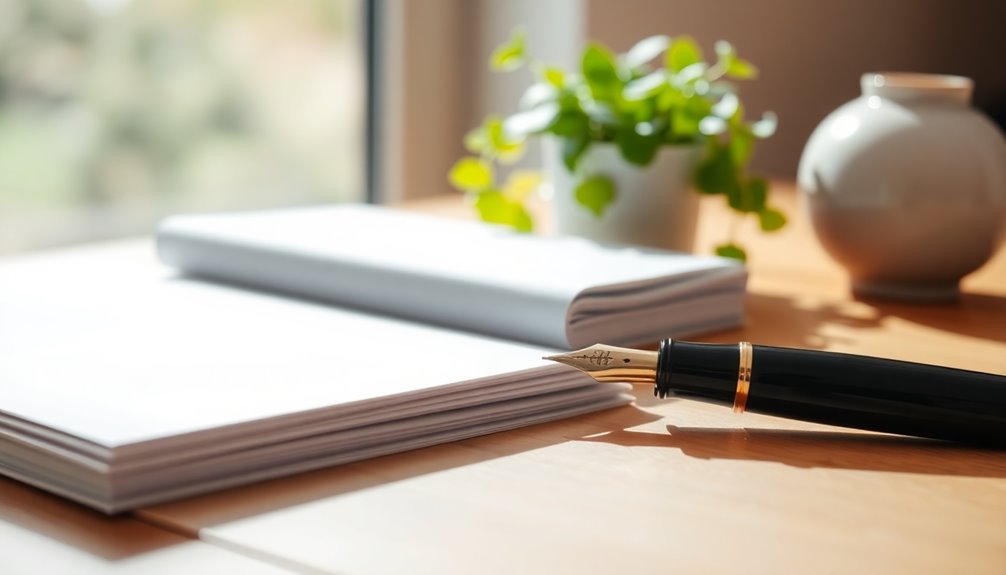The Kraft paper process, crucial for about 80% of the U.S. chemically produced pulp, involves hidden steps that aren't widely discussed. You might be surprised to know that wood chips are cooked with strong alkaline chemicals to separate lignin from cellulose, resulting in a durable brown stock. This method significantly lowers chemical waste through recycling, yet it also raises environmental concerns, such as air pollution and wastewater toxicity. While many brands champion Kraft paper for its recyclability, the production has a complex ecological footprint. Stick around, and you'll uncover more about both the benefits and hidden truths of this popular material.
Key Takeaways
- The Kraft process uses strong alkaline chemicals to separate lignin from cellulose, producing brown stock with residual chemicals.
- Innovations like recovery boilers recycle chemicals, minimizing waste and enhancing environmental sustainability in paper production.
- Air pollution from VOCs and particulate matter is a significant concern during Kraft paper manufacturing, impacting public health.
- Wastewater from Kraft mills often contains high levels of BOD, DOC, and heavy metals, necessitating careful treatment to mitigate environmental impact.
- Despite its eco-friendly applications, the production process still poses ecological risks that factories may downplay or overlook.
Surprising Kraft Paper Origins
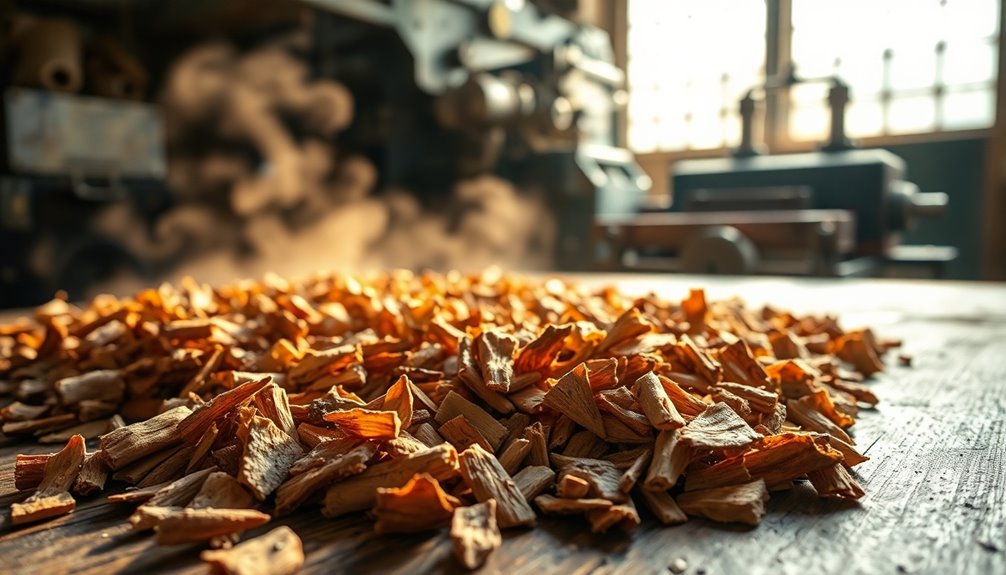
Discovering the origins of Kraft paper reveals a fascinating journey rooted in strength and innovation. The term "Kraft" comes from the German word for "strength," perfectly encapsulating the robust qualities of the paper produced through this method. Invented by Carl Ferdinand Dahl in 1884, the Kraft process has become a cornerstone of the paper industry, with about 80% of chemically produced pulp in the USA utilizing this approach.
In the Kraft process, wood chips are cooked with strong alkaline chemicals, mainly sodium hydroxide and sodium sulfide. This pulping process efficiently separates cellulose from lignin, creating high-quality pulp. Innovations in this method have significantly advanced since its inception, leading to the development of recovery boilers that recycle chemicals, making it an environmentally friendly choice in pulp production.
The result is brown kraft paper, known for its durability and versatility. Understanding these origins not only highlights the ingenuity behind Kraft paper but also emphasizes its importance in sustainable manufacturing practices. So, the next time you use kraft paper, remember the fascinating journey of wood chips transforming into this strong, eco-friendly material.
Kraft Paper's Unique Strength
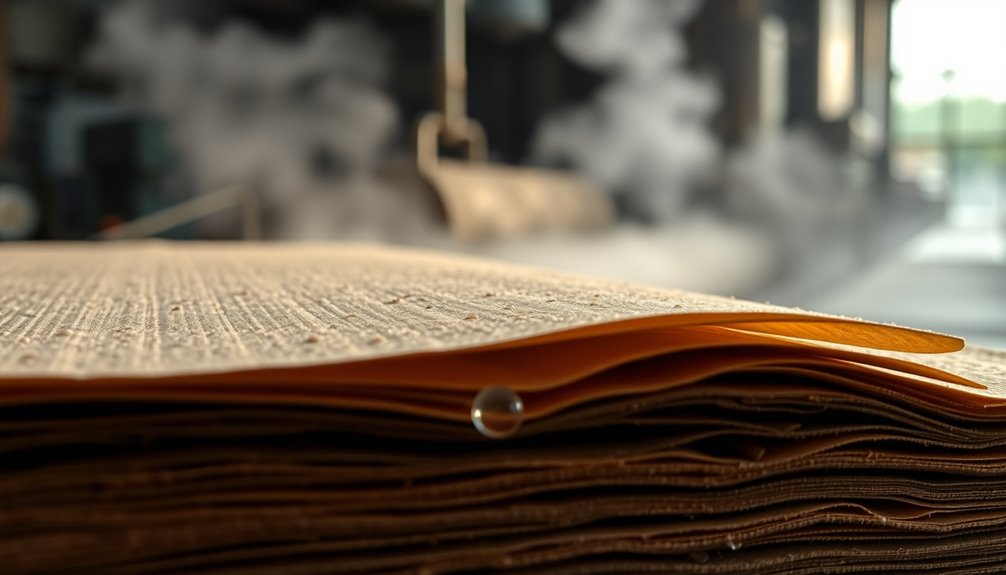
Kraft paper stands out in the world of materials due to its exceptional strength, a direct result of the Kraft process. This method preserves long, strong cellulose fibers from softwood trees like pine and spruce, resulting in a product with remarkable tensile strength. During the Kraft process, the chemical action of delignification breaks down lignin, which binds wood fibers, allowing for a higher yield of robust pulp compared to other pulping methods.
The unbleached nature of kraft paper enhances its durability, as it retains the natural integrity of the cellulose fibers. This strength makes kraft paper an ideal choice for packaging items, particularly fragile products that need extra protection during shipping and handling. Its high absorbency also allows kraft paper to hold ink effectively, making it suitable for customized branding on shopping bags and envelopes.
Whether you're looking to package delicate goods or create eye-catching branding, kraft paper's unique strength and versatility ensure it meets your needs while providing reliable performance. In a world where durability is essential, kraft paper rises to the challenge, combining functionality with environmental friendliness.
Creative Gift Wrapping Ideas
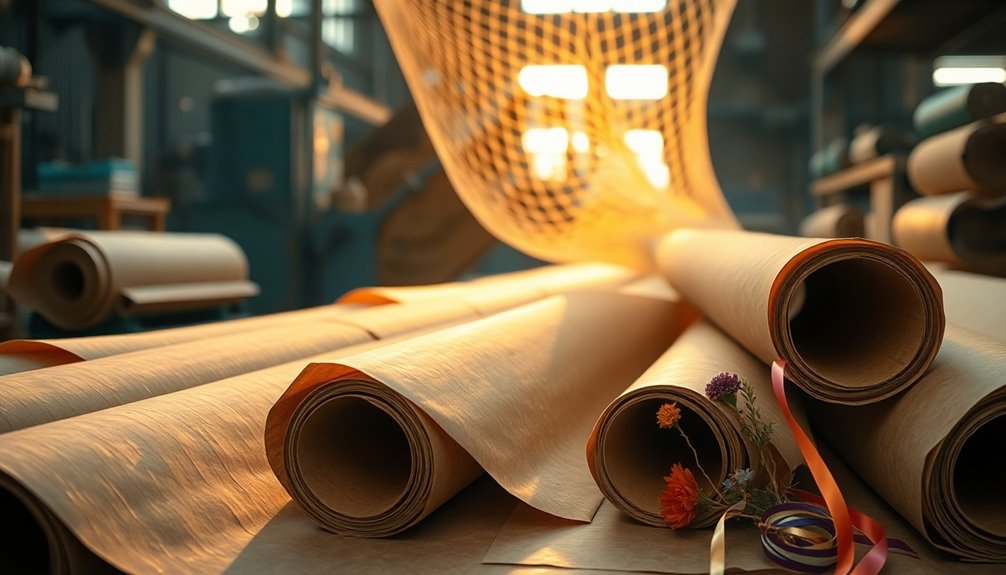
Gift wrapping can transform a simple present into a memorable experience, and using kraft paper offers a unique, rustic charm. Its natural brown color enhances the visual appeal of your gifts, making it perfect for occasions like birthdays and holidays. You can take your gift wrapping to the next level by adding custom designs. Use silk-screen printing or eco-friendly inks to personalize the kraft paper with names or messages, making each gift feel special.
Don't stop there—get creative with embellishments! Twine, dried flowers, or hand-painted designs can elevate the overall look of your kraft-wrapped gifts, adding a thoughtful touch. You can also embrace a DIY approach by crafting unique gift bags and boxes out of kraft paper. This versatility allows you to create various shapes and sizes tailored to your gifts.
Plus, using kraft paper aligns with eco-conscious practices. It's 100% recyclable and biodegradable, appealing to environmentally friendly consumers. By choosing kraft paper for your gift wrapping, you add value to your presents and contribute positively to the planet. Also, consider pairing your gifts with air quality considerations to ensure a healthier environment for your loved ones. So, let your creativity shine and make your gifts stand out!
Environmental Impact Assessments
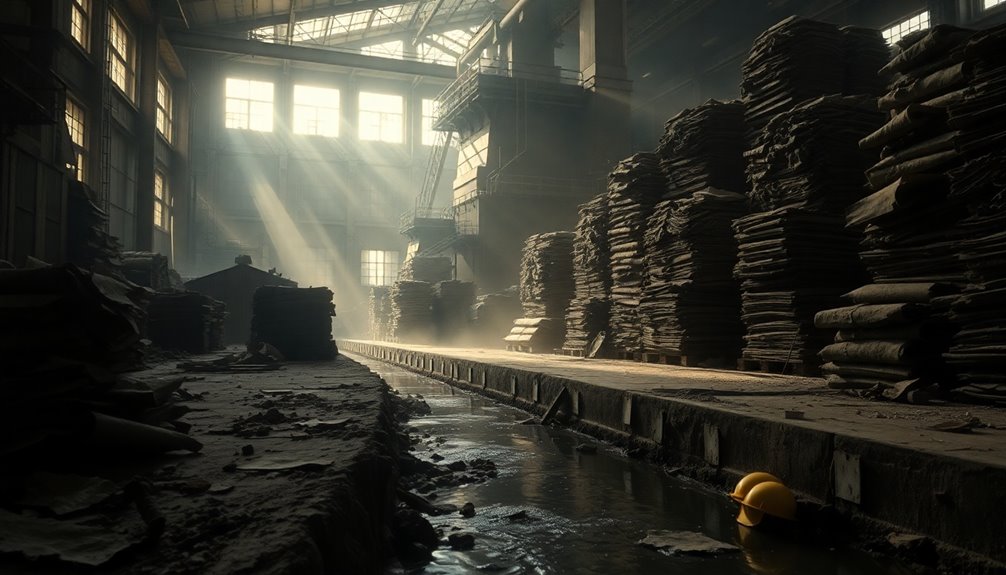
Environmental impact assessments (EIAs) play a crucial role in understanding the ecological footprint of kraft paper production. They highlight significant concerns related to air pollution and wastewater effluent generated by kraft mills. You'll find that emissions of volatile organic compounds (VOCs) and particulate matter are prevalent, posing risks to both the environment and public health.
The wastewater effluent often contains high levels of biochemical oxygen demand (BOD), dissolved organic carbon (DOC), and heavy metals, which require rigorous treatment to mitigate their environmental impact. Fortunately, sustainability efforts are underway to address these issues. Innovations in pulping technology aim to enhance delignification efficiency, helping to reduce waste and minimize emissions.
Additionally, modern kraft mills are designed to comply with regulatory measures that enforce better waste management practices. These practices significantly lower the ecological footprint of pulp production. By understanding the findings from EIAs, you can appreciate the ongoing changes in the kraft paper industry and the steps being taken to create a more sustainable future. As the industry evolves, it's essential for you to stay informed about these environmental impacts and the efforts to counteract them.
Sustainable Brands Using Kraft Paper
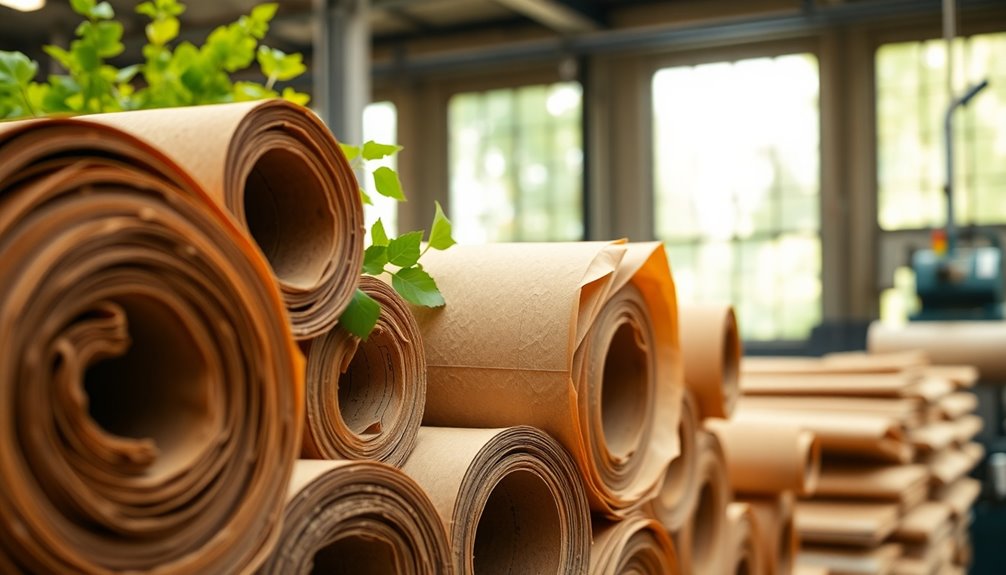
Sustainable packaging solutions are gaining traction, with brands like IKEA and Uniqlo leading the charge by adopting kraft paper for their packaging needs. By using kraft paper, these sustainable brands are actively reducing their plastic footprint and promoting environmental responsibility. Kraft paper, made from wood pulp, is biodegradable, making it an eco-friendly alternative to traditional packaging materials. The emphasis on using natural materials in their packaging reflects a commitment to sustainability that resonates with eco-conscious consumers. Furthermore, the practice of conscious consumption encourages individuals to consider the environmental impact of their purchases.
Patagonia also embraces this movement, utilizing kraft paper for product tags and packaging. Their commitment encourages consumers to recycle, aligning perfectly with the growing consumer preference for sustainable options. In the grocery sector, Whole Foods Market showcases kraft paper in their bags, highlighting their dedication to reducing plastic waste.
E-commerce giant Amazon has joined the trend too, introducing kraft paper mailers to minimize plastic use during shipping. This shift reflects a broader sustainability goal among major players in the pulp and paper industry. As more brands adopt kraft paper, the global market is projected to grow significantly, with a CAGR of over 4% in the coming years. Additionally, using energy-efficient technology in production processes can further enhance the sustainability of these packaging solutions. You can see that sustainable brands are not just making a choice; they're paving the way towards a greener future.
Kraft Paper's Production Process
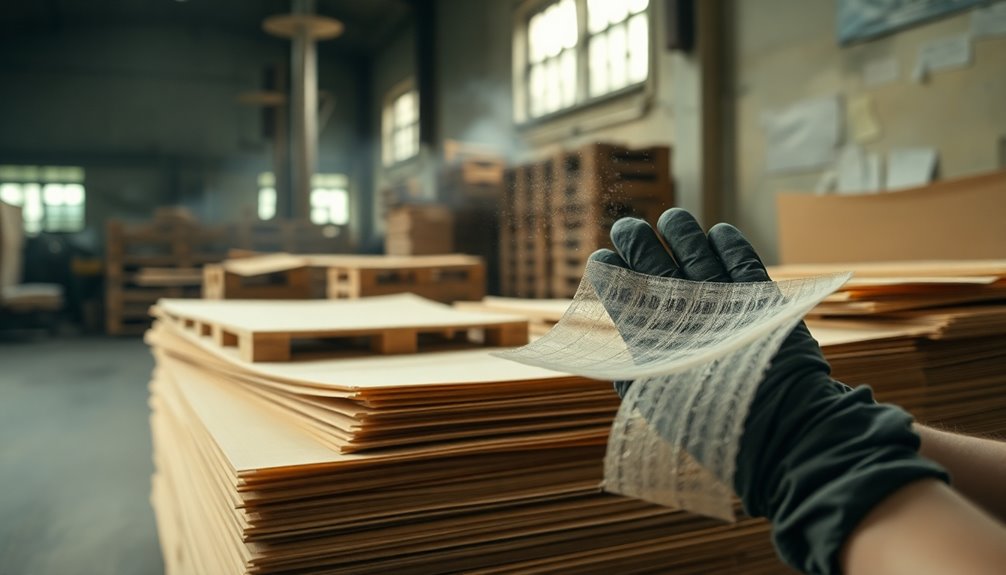
The kraft paper production process starts with wood chips, which are transformed into a fibrous pulp through a series of chemical treatments. In the Kraft pulping method, those wood chips are steamed and mixed with a chemical solution of sodium hydroxide and sodium sulfide. This initiates delignification, breaking down lignin and releasing cellulose fibers. The wood chips are then cooked in a digester at high pressure and temperatures of around 170-176°C for about two hours. This results in a pulp known as brown stock, which contains residual lignin and inorganic salts.
After cooking, the brown stock undergoes washing and screening to remove impurities like shives and debris, ensuring you get a clean pulp for further processing. If desired, the pulp can go through a bleaching process to enhance its whiteness, though this step isn't always necessary for producing brown paper, like brown sack paper. Notably, Kraft pulping is a process that emphasizes recovery and reuse of chemicals, significantly reducing environmental impact. This innovative approach is what makes many paper mills more sustainable in the production of kraft paper.
Frequently Asked Questions
What Is the Kraft Paper Process?
The kraft paper process involves cooking wood chips in a mix of chemicals, breaking down lignin to create strong pulp. You heat the mixture in pressurized digesters, reaching high temperatures for a couple of hours. After cooking, you wash and screen the pulp to remove any leftover impurities. If you want brighter paper, you can bleach it. This method ensures you get durable paper with impressive strength, making it a popular choice worldwide.
What Are the 5 Stages of the Paper Making Process?
The paper-making process involves five key stages. First, you prepare the wood by debarking and chipping logs into uniform pieces. Next, you move to pulping, where those chips are cooked in a chemical solution to break down lignin and separate cellulose fibers. After that, you wash the pulp to remove impurities, then bleach it to enhance its whiteness. Finally, you refine the pulp to improve fiber bonding, resulting in strong, durable paper products.
Is Kraft Paper 100% Recycled?
Kraft paper isn't always 100% recycled. While it can be made entirely from recycled materials, many products contain a mix of recycled and virgin fibers. To find kraft paper that's 100% recycled, you should check for certifications or labels indicating the recycled content. This helps ensure you're making an eco-friendly choice while reducing the demand for new materials. Always look closely at packaging for the information you need!
What Chemicals Are Used in Kraft Paper Making?
In kraft paper making, you'll encounter several key chemicals. Sodium hydroxide and sodium sulfide are crucial for breaking down lignin and separating wood fibers during pulping. You'll also see surfactants to enhance pulp performance, defoamers to eliminate excess foam, and dispersing agents for better fiber distribution. Additionally, chemical recovery systems play a vital role, allowing for the reclamation and reuse of these chemicals, which helps reduce waste and environmental impact.

